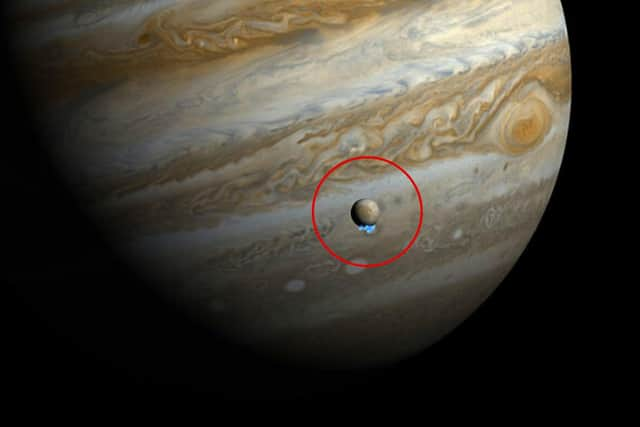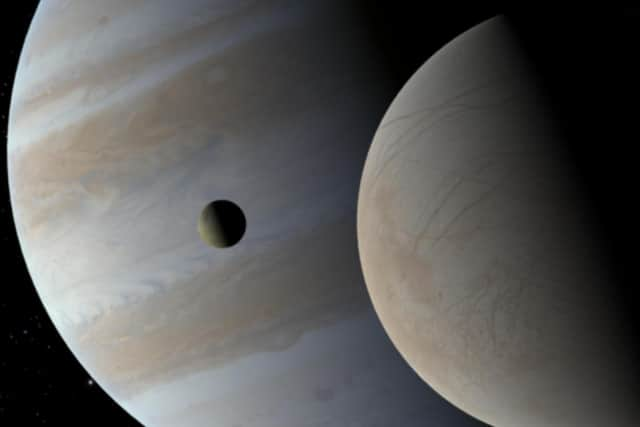Jupiter Moon Could Support Life: NASA spacecraft will probe the moon’s crust and see if it’s suitable for life
NASA reports that the ice-covered oceans of Europa - a moon of Jupiter which is currently the closest it has been to Earth in 59 years - could host alien life.
NASA believes that its “rock-hard” icy crust covers a “huge, salty, liquid ocean” beneath.
Advertisement
Hide AdAdvertisement
Hide AdHere’s everything you should know about Jupiter’s moon, whether it could host life and if other planets in our solar system could do the same.


When will NASA’s spacecraft ‘fly by’ Jupiter?
On 29 September, NASA's Juno’ spacecraft will perform a ‘flyby’ of Europa.
A flyby is the path a spacecraft follows past a planet to gain information about it, it flies close but it isn’t pulled into its gravity.
According to NASA’s website, a flyby spacecraft has a limited opportunity to gather data - once it has flown past the planet it “cannot return to recover any lost data.”


Why does NASA believe there could be life on Europa?
Europa is considered one of the best places in our solar system to investigate extraterrestrial life because of the massive ocean it holds beneath its icy crust, making it a top priority for astrobiologists.
In a statement, NASA said: "Since there are lots of tiny creatures that live in very harsh water environments here on Earth, it’s possible that this type of life could also exist on Europa.”
The Principal Investigator for the Juno mission, Scott Bolton, said “Everywhere on our planet where there is water, there is life, and we suspect life got started in the ocean.”
Are there other planets that could support life?
According to Nasa’s Exoplanet Exploration website, there are many recorded planets that could theoretically support life because they exist in a “habitable zone”.
Advertisement
Hide AdAdvertisement
Hide AdA habitable zone is the distance from a star (like the sun) at which liquid water could exist on the orbiting planet’s surface, water being a crucial component to biological life.
Such zones are also known as “Goldilocks’ Zones” as the thermal conditions are neither "too hot nor too cold” to support life in theory.
National Geographic’s Astrobiology blog wrote: “Of the 1,780 confirmed planets beyond our solar system, as many as 16 are located in their star’s habitable zone, where conditions are neither too hot nor too cold to support life.”
To learn more about NASA’s “flight” over Jupiter (where the spacecraft will be within 222 miles of the planet’s moon, Europa) check out NASA’s official website.
Comments
Want to join the conversation? Please or to comment on this article.
